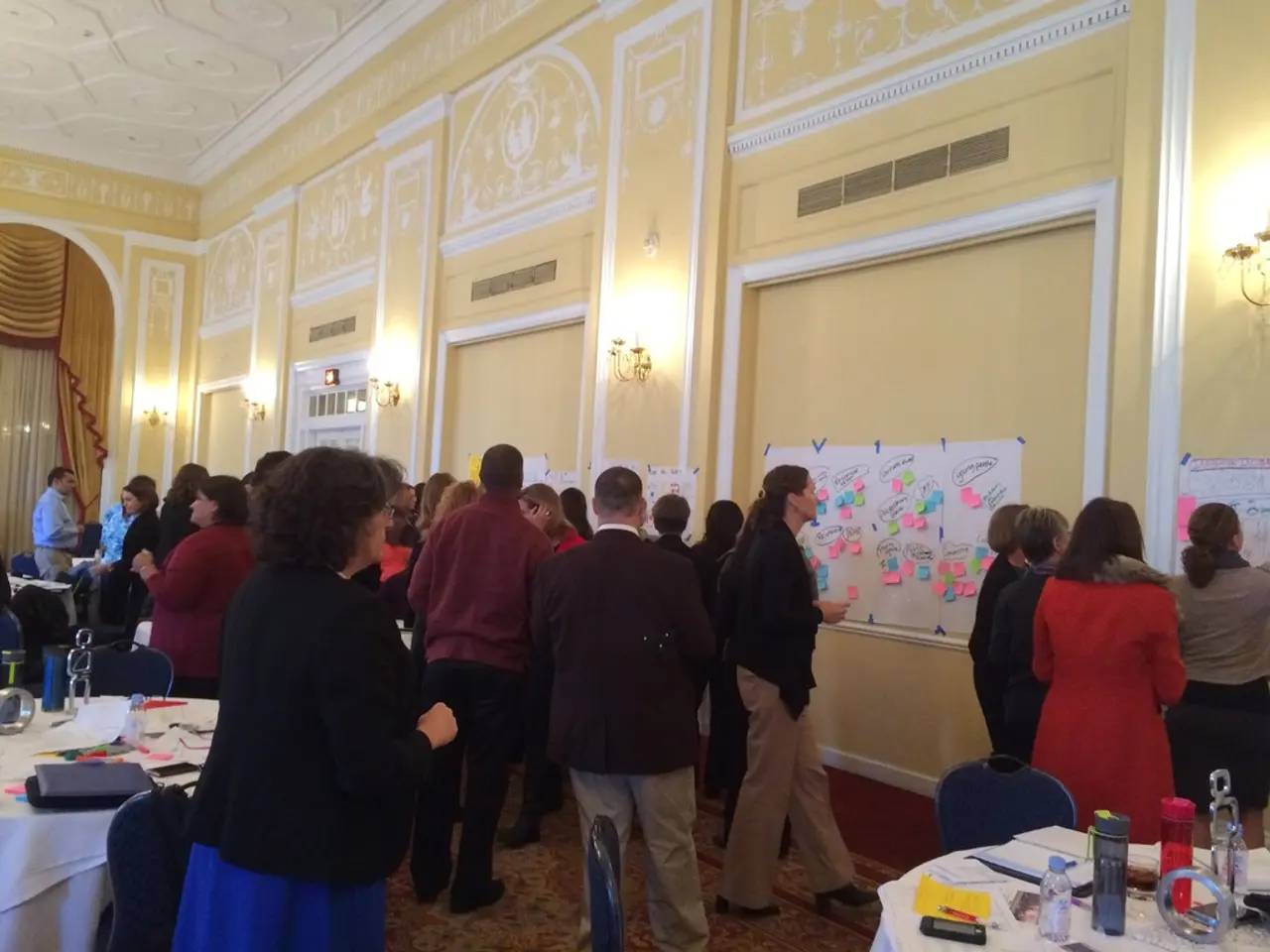Water shortage prompts shutdown of Tehran's public restrooms
In the heart of Iran, the city of Tehran is grappling with an acute water crisis that has left its reservoirs at historically low levels. With the city's reservoirs hovering around 10-14% capacity, over 40 cities, including Tehran, are experiencing routine water rationing and prolonged outages due to a combination of factors such as prolonged drought, climate change, excessive aquifer extraction, and inefficient water management [1][2].
The government, led by President Massoud Peseschkian, has taken immediate action, implementing emergency water cuts and water-saving campaigns. However, the crisis persists across the nation, straining both urban and rural supplies [1].
One of the most noticeable changes in Tehran is the closure of many public toilets near and inside metro stations. This move is part of the government's efforts to address the water crisis, as the closure is reportedly worsening the water situation in the city [3]. The Tehran municipality has yet to comment on this matter.
The closure of public toilets is causing inconvenience for residents and visitors in Tehran. Many residents have taken to social media to express their concerns, with some complaining that it is barely possible to live a dignified life under these conditions [4]. Didehban-Iran, a local organisation, has accused the government of denying Tehran residents a basic necessity by halting the essential service of public toilets [5].
The water crisis in Iran is severe and is affecting various aspects of life. Prolonged power outages are occurring, making the use of air conditioning impossible in temperatures ranging from 40 to 50 degrees Celsius. The closure of public toilets is just one of the many challenges faced by Iranians in their daily lives [6].
President Peseschkian has referred to a "natural disaster" that could worsen in the coming weeks, urging citizens to consume less water [7]. In an attempt to conserve resources, the government is considering reducing the workweek from five to four days or imposing a one-week shutdown of the capital to save power and water [8]. However, these plans have been temporarily shelved due to their potential negative economic impact.
The situation is so dire that all of Iran's dams are nearly empty, according to President Peseschkian [9]. The water crisis is a complex issue, with deep-rooted causes such as five consecutive years of drought, soaring temperatures, and inefficient water use. Agriculture, which consumes over 90% of the water but generates only about 9–12% of GDP and employs 17% of the workforce, is a significant contributor to the problem [2].
In response, the government is urging citizens to conserve water and is working on urgent water transfer projects. However, the scale of the crisis requires fundamental reforms, particularly redirecting water from inefficient agriculture to domestic use [2]. President Peseschkian has even suggested radical solutions such as relocating the capital to prevent potential chaos [2].
In conclusion, the water crisis in Iran, particularly in Tehran, is a pressing issue that requires immediate attention and long-term solutions. The government's efforts to conserve water and implement emergency measures are a step in the right direction, but the crisis is far from over. The people of Iran are facing challenging times, and the government must act swiftly to address this crisis and ensure the basic needs of its citizens are met.
References: [1] BBC News. (2021, August 11). Iran's water crisis: What's behind the drought? https://www.bbc.com/news/world-middle-east-58105133 [2] The Guardian. (2021, July 28). Iran's water crisis: the struggle to survive in a country running out of water. https://www.theguardian.com/world/2021/jul/28/irans-water-crisis-the-struggle-to-survive-in-a-country-running-out-of-water [3] Reuters. (2021, August 10). Iran's Tehran to close public toilets as part of water-saving measures. https://www.reuters.com/world/middle-east/irans-tehran-to-close-public-toilets-part-water-saving-measures-2021-08-10/ [4] Al Jazeera. (2021, August 12). Iranians complain of water shortages as crisis worsens. https://www.aljazeera.com/news/2021/8/12/iranians-complain-of-water-shortages-as-crisis-worsens [5] Radio Farda. (2021, August 11). Iranians Protest Closure of Public Toilets Amid Water Crisis. https://en.radiofarda.com/a/iran-public-toilets-closure-protest/31440680.html [6] IranWire. (2021, August 11). Iran's Water Crisis: The Unbearable Heat In Tehran. https://iranwire.com/a/irans-water-crisis-the-unbearable-heat-in-tehran [7] Press TV. (2021, August 10). Iran's president warns of water crisis worsening in coming weeks. https://www.presstv.ir/Detail/2021/08/10/669674/Iran-President-Rouhani-water-crisis-worsening [8] Radio Farda. (2021, August 12). Iran's Water Crisis: Government Considers Reducing Workweek To Save Water. https://en.radiofarda.com/a/iran-water-crisis-government-considers-reducing-workweek-to-save-water/31440721.html [9] Tehran Times. (2021, July 28). Iran's dams nearly empty, says president. https://www.tehrantimes.com/news/467026/Iran-s-dams-nearly-empty-says-president
- The water crisis in Iran, deeply rooted in climate change, drought, and inefficient water use, has escalated to the point where the government is considering policy changes like reducing the workweek to save water and power [8].
- In the midst of this critical situation, the government's efforts to address the water crisis extend to the realm of environmental science, such as implementing emergency water cuts and water-saving campaigns [1].
- The impact of the water crisis on the general news and politics of Iran is significant, as the government grapples with the challenge of enacting policy-and-legislation that can effectively manage the crisis, balancing the need for water conservation with the economy [8].








